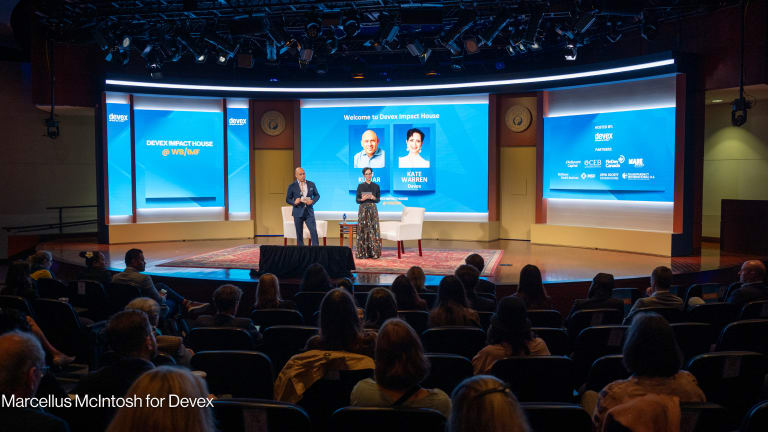
Social entrepreneurship is on the rise and has become increasingly popular in the last three decades. Social entrepreneurship is seen as a new way of doing business while creating long-lasting and widespread social change.
Social entrepreneurs are developing innovative business models that blend traditional capitalism with solutions that address the long-term needs of society and the planet, tackling chronic social problems ranging from access to power in sub-Saharan Africa to maternal and child health programs in East Asia.
There are some high-profile success stories about social entrepreneurs launching life-changing ventures, like Muhammad Yunus, founder of the Grameen Bank and father of microcredit financing.
Despite growing visibility and examples of success, social enterprises are still startups that may or may not succeed in the long run. Regardless, they demonstrate new models of development in which economic success and social value are no longer seen as contradictory.
If you are interested in social entrepreneurship, or are an aspiring social entrepreneur, here are five must-reads that explore what social entrepreneurship is, how it can deliver sustainable impact, and the entrepreneurship ecosystem as a whole.
“The Meaning of Social Entrepreneurship”
J. Gregory Dees (Duke University’s Innovation and Entrepreneurship Initiative, 1998, 10 pages)
What does social entrepreneurship mean? How does a social entrepreneur differ from a business entrepreneur? What characteristics does a successful social entrepreneur possess?
This fundamental text brings clarity to an emerging field by defining social entrepreneurship in a relatable way. Author J. Gregory Dees, a Duke University professor who was a pioneer in the field of social entrepreneurship, helps to decipher what a social entrepreneur is in the context of the history and theories of entrepreneurship.
According to Dees, not everyone can be or should be a social entrepreneur. These people are a “rare breed” that combine a passion and commitment for long-lasting social change with the ability to find opportunities for innovation.
The author defines a social entrepreneur by elaborating on five specific behaviors: adopting a social mission; relentlessly pursuing opportunities to further that mission; continuously innovating, adapting, and learning; acting boldly without constraints of limited resources; and consciously being accountable to this target audience of the mission.
Not everyone will check all five boxes. But the closer you get along the spectrum, the more you will fit the ‘model’ of social entrepreneurship. And just like not everyone is fit to lead a business, Dees argues that not everyone is fit to be a social entrepreneur, either.
This article is a quick and easy foundation for understanding what social entrepreneurship is, where it came from, and how it is defined. However, it should be taken in the appropriate context; Dees originally wrote this article in 1998, just as social entrepreneurship was becoming ‘trendy,’ and the economy was growing rapidly. While he updated the text in 2001, the social, political and economic environments have changed tremendously in the last decades. Despite its age, the article holds up well to understanding the fundamentals of social entrepreneurship and its beginnings.
“Reshaping Social Entrepreneurship”
Paul C. Light (Stanford’s Social Innovation Review, 2006, 7 pages)
In contrast to Dees, Paul C. Light, a professor at the New York University’s Wagner Graduate School of Public Affairs, suggests that social entrepreneurs are not born with certain behavior traits that set them up for success; rather, they have learned skills and create supportive environments that enable innovative problem solving. Focusing too much on the individual may make social entrepreneurship seem like an unattainable goal.
This text asks and answers tough questions: Can organizations and nonprofits be considered social entrepreneurs? Is one still considered a social entrepreneur if all previous ventures have failed? What is the difference between a failed venture and a successful one? Is social entrepreneurship more about the idea, or the process?
The author argues that it is a challenge to identify a single person with the long list of characteristics “needed” for successful social entrepreneurship. Instead, why not concentrate on a team of people that bring together the mix of talents, personalities, skills and resources to create innovative and iterative solutions for opportunities for change. By focusing on the ecosystem of social entrepreneurship, long-lasting change can happen far more frequently.
Social Entrepreneurship: The Case for Definition
Roger L. Martin and Sally R. Osberg (Stanford Social Innovation Review, 2007, 14 pages)
As the field of social entrepreneurship becomes trendier and more mainstream, more people begin to claim the title. But a crowded playing field can be detrimental by detracting from those who are actually making valuable contributions to the larger society.
This article puts social entrepreneurship into the context of a business entrepreneurial environment. Examples of contemporary entrepreneurs — Steve Jobs and Steve Wozniak, Pierre Omidyar and Jeff Skoll, Ann and Mike Moore, and Fred Smith — demonstrate clearly how entrepreneurs innovate through opportunities, and how social entrepreneurs expand upon these opportunities by focusing on social change.
Social entrepreneurs thrive by identifying an unsatisfactory socio-economic equilibrium and embracing the opportunities that are present to change it. Like Dees, the authors identify key characteristics: inspiration, creativity, direct action, courage and fortitude.
Equally as important as defining what social entrepreneurship is, this article identifies what social entrepreneurship is not. Boundaries identified by outcomes — long-lasting, widespread change versus change confined to a local population, and types of actions — direct versus indirect action, are two key pieces that narrow social entrepreneurship into a focused, manageable field.
“Two Keys to Sustainable Social Enterprise”
Roger L. Martin and Sally R. Osberg (Harvard Business Review, May 2015, 16 pages)
Now that you understand was a social entrepreneur is, you should know how a social enterprise works. Martin and Osberg consolidate case studies from 91 social entrepreneurship organizations and provide insight into their successes.
A primary feature of a successful social entrepreneurship venture is sustainability. Without it, the enterprise would never create long-lasting and catalytic change in the society’s status quo. Muhammad Yunus proved the value of sustainability through his program providing microloans to Bangladeshi women. His venture was not only financially sustainable, but also profitable — encouraging others to follow his model and creating substantial impact.
Creating a sustainable, permanent shift is a challenge when starting from scratch. Instead, to increase their chances of being sustainable, each of the 91 social enterprises first looked at the existing system in place. Disrupting the status quo to effectively create a social benefit required them to change two key features: the economic actors involved and the enabling technology applied.
Social entrepreneurs can also create transformative change by influencing economic actors involved. For example, informing socially conscious consumers about child labor exploitation in a particular industry may encourage them to take their business elsewhere, effectively voting with their wallets.
Social entrepreneurs can also create create change through new technologies. This can mean disrupting the business structures, tools, and models of the normal way of operating. By substituting an existing method with a cheaper tool or innovation, creating a new technology to solve an ongoing problem, or repurposing an old idea in a new context, social entrepreneurs can create better outcomes or cheaper costs, turning “prohibitively expensive” into “lifesaving.”
2014 Global Entrepreneurship Monitor
Slavia Singer, Jose Ernesto Amoros and Daniel Moska (Babson University, 2014, 116 pages)
At this point, you may be curious about the ecosystem as a whole. The Global Entrepreneurship Monitor provides excellent context about the entrepreneurship environment through a survey of more than 206,000 individuals from 73 economies, providing insight into global trends.
The report analyzes what factors drive entrepreneurs in various economies, the cultural values that are placed on entrepreneurs, and measures of inclusiveness in regards to gender, age, and income.
For example, becoming an entrepreneur is seen as valuable and holds a high status in African economies, but not in the European Union. Africa has the highest amount of entrepreneurship activity than any region, and also has the closest balance between men and women engaged in early-stage entrepreneurship activity. Women more often than men will start their own entrepreneurial ventures out of necessity across any region.
This collection of primary data can help an emerging social entrepreneur understand the context of the environment, and provide insight into upcoming challenges or opportunities in specific regions.
There are many other fascinating parts to the social entrepreneurship ecosystem. Read how investors see value in financing social entrepreneurs with BNY Mellon’s Social Finance at Scale: Creating Value for Investors. Watch a unique film about how social entrepreneurs across the world see themselves as change-makers in the 93-minute film “Who Cares?”
Do you have any favorite articles about social entrepreneurship? Tweet us at @DevexImpact to let us know!
To learn more about social entrepreneurship, check out our series the #SocEnt Revolution: How entrepreneurship is changing global development, which explores the entrepreneurship ecosystem, from the roles of different actors to donor support, financing and incubators, in an effort to examine what needs to be done to maximize the impact of entrepreneurship in the post-2015 era of development.








